The modern Eberhard Contograf finds its origins in a 1960 release of the same name. The original watch was distinguished most of all by its period design (picture below, via Analog/Shift). With panda-style subdials, dauphine hands, and the unique red line and “50” print marking the 50 km/hour mark on the tachymetric scale — the standard speed limit in many European cities then and now — the Contograf was a watch that brought together a wide variety of 1960s-era designs in a single format. The original never broke out as a timepiece with mass appeal, and was eventually discontinued about a decade after its release, but today it represents a great value to a few fervent collectors; enough of one, in fact, for Eberhard to revive the design in today’s modern iteration.
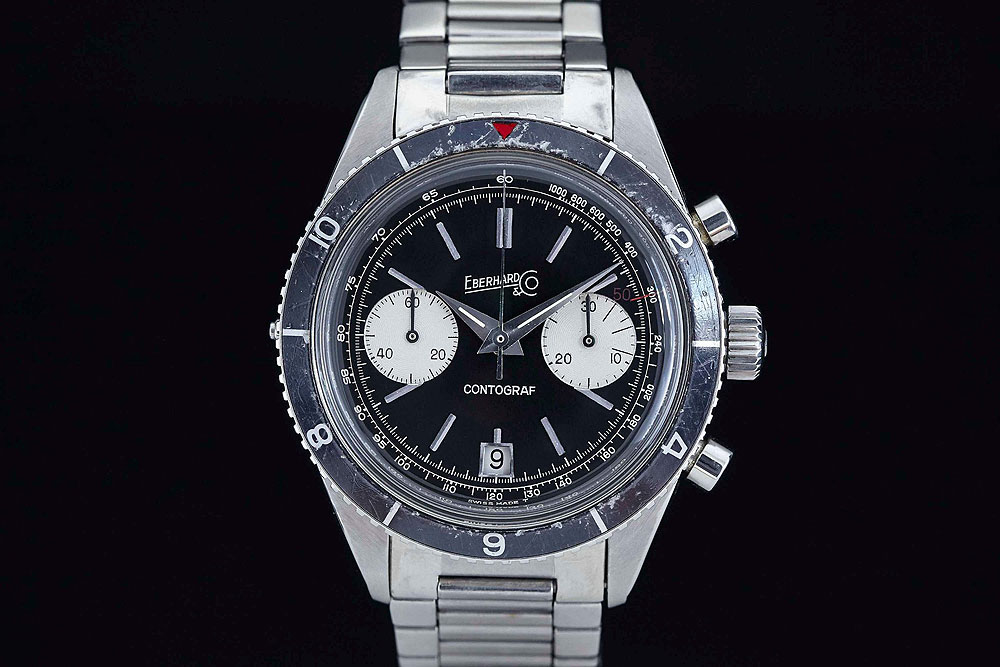
The contemporary editions of the watch, first released by Eberhard in 2014, have historically inspired designs with some clear modern updates. Available with a black, white, or two different panda-style dials, the 42-mm steel chronograph features a simple, rotating black ceramic bezel, pump pushers, a screw-down crown, and a vintage-style steel bracelet. The dial of the watch, in all four of its different colorways, has an outer tachymetric scale; applied rectangular hours markers; two subdials, for running seconds and a 30-minute chronograph counter; and a 6 o’clock date window with a red numeral. Sweeping over the face are two dauphine hour and minute hands, with a simple red chronograph seconds pointer to match the highlighted “50” mark on the right side of the dial.
Inside the Contograf is the automatic ETA 7750 movement, capable of a 42-hour power reserve, protected by a commemorative caseback reading “Tribute to Contograf 1960s.” When the watch was originally released, it was available for $5,750 on a leather strap and for $6,350 on the vintage steel bracelet, though you may now find it for a discounted price through various online dealers.
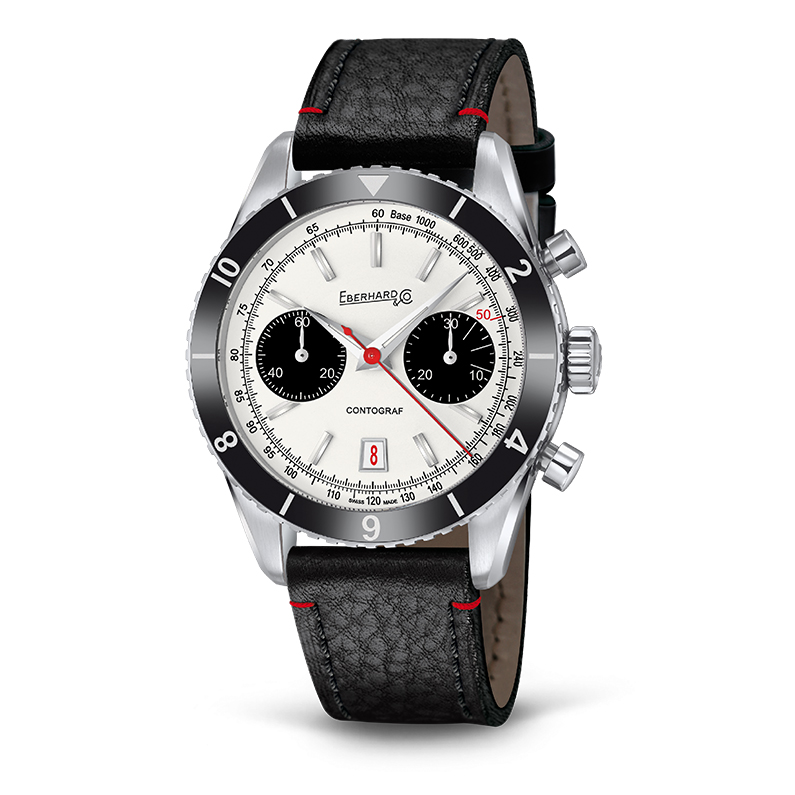
The modern iterations of the watch, when held up in comparison to their vintage predecessors, are in many ways faithful to the original design. The prominent elements of the watch — the dauphine hands, steel bracelet, outer bi-directional bezel, “panda” colorways, applied hour markers, and 6 o’clock date — all check a design box. Even in smaller, though possibly more significant areas, the modern watch maintains various vintage features — the red “50” mark, for example, and more subtly, the segmented 30-minute counter meant to help measure the time of a phone call in the original watch’s era of pay-per-minute phone booths.
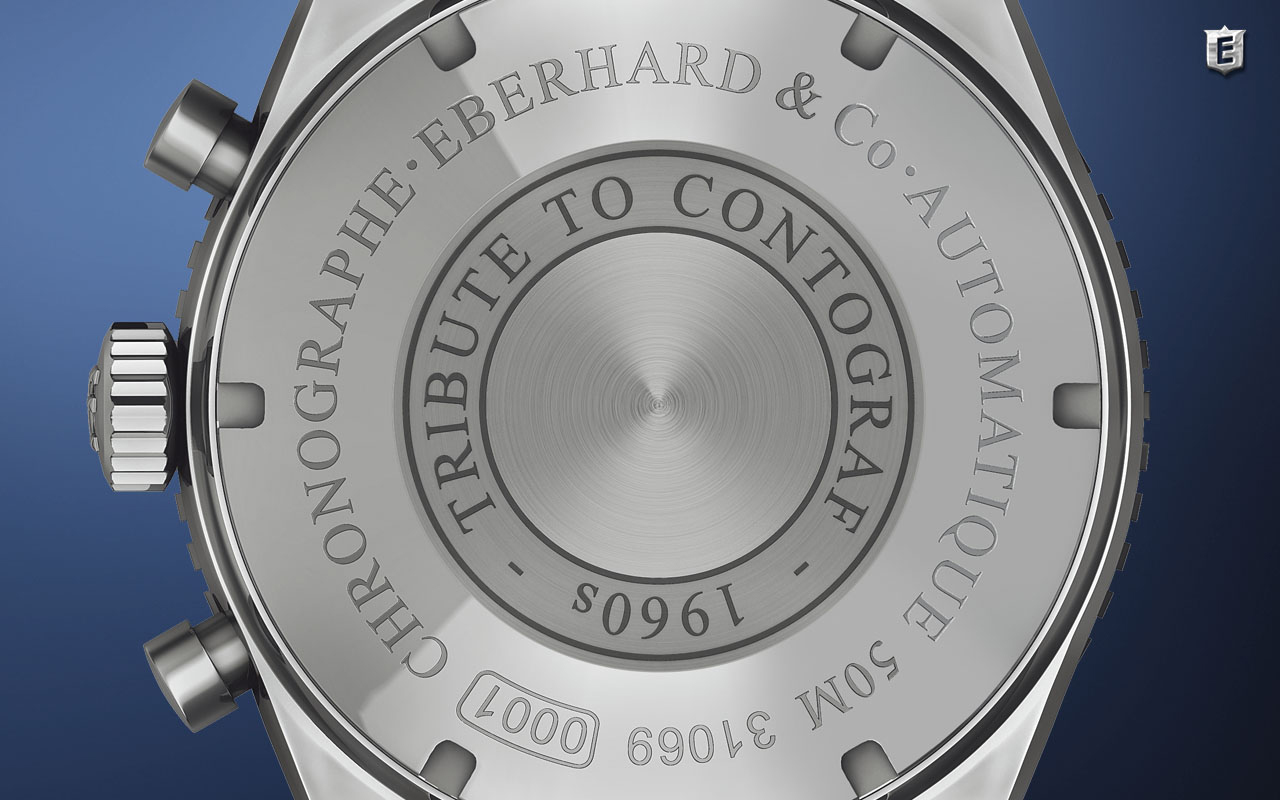
The modern watch is clearly larger than its predecessor, at 42 mm in diameter compared to the 38-mm size of the 1960s piece, and the colorways come in contrast to what appears to be a singular black-dial-with-white-subdial design for the vintage models. Some smaller changes are seen in the greater use of red accenting, like in the chronograph seconds counter and date window, and also in the cleaner application of the hour markers, with the brand notably foregoing the double markers at the 12 o’clock position. Outside of these design changes, the manufacturing is clearly different, as seen in the use of a ceramic bezel for the contemporary piece as compared to what was likely Bakelite in the historical one, and also in the use of an automatic ETA movement as compared to the original’s in-house, manually wound Caliber 310.82.
In recent years — especially in the United States — Eberhard has begun to garner a much larger following than in decades prior. This partly has to do with the quality of its watches, but also very likely due to the rising popularity of its vintage designs, and the brand’s efforts to cater to this demand. This is easily seen in the Contograf, a stylistically fascinating watch that might not have held its place in the market for long in its original era, but is likely to have a much longer run in the “new vintage” format popular with today’s consumers. (Eberhard’s dedication to the concept has been seen even more recently, in the release of the Nuvolari Legend, another vintage-chronograph-inspired design.) In the coming years, the market is likely to see more of these type of pieces, and with them perhaps a fuller embrace of Eberhard in the North American market.

For the most recent article in the “Vintage Eye” series, in which we compare the Longines Heritage 1945 to its historical predecessor, click here.
Caleb Anderson is a freelance writer with a primary focus on vintage watches. Since first discovering horology, he has garnered extensive knowledge in the field and spends much of his time sharing his opinions among other writers, collectors, and dealers. Currently located near New York City, he is a persistent student in all things historical, a writer on many topics, and a casual runner.

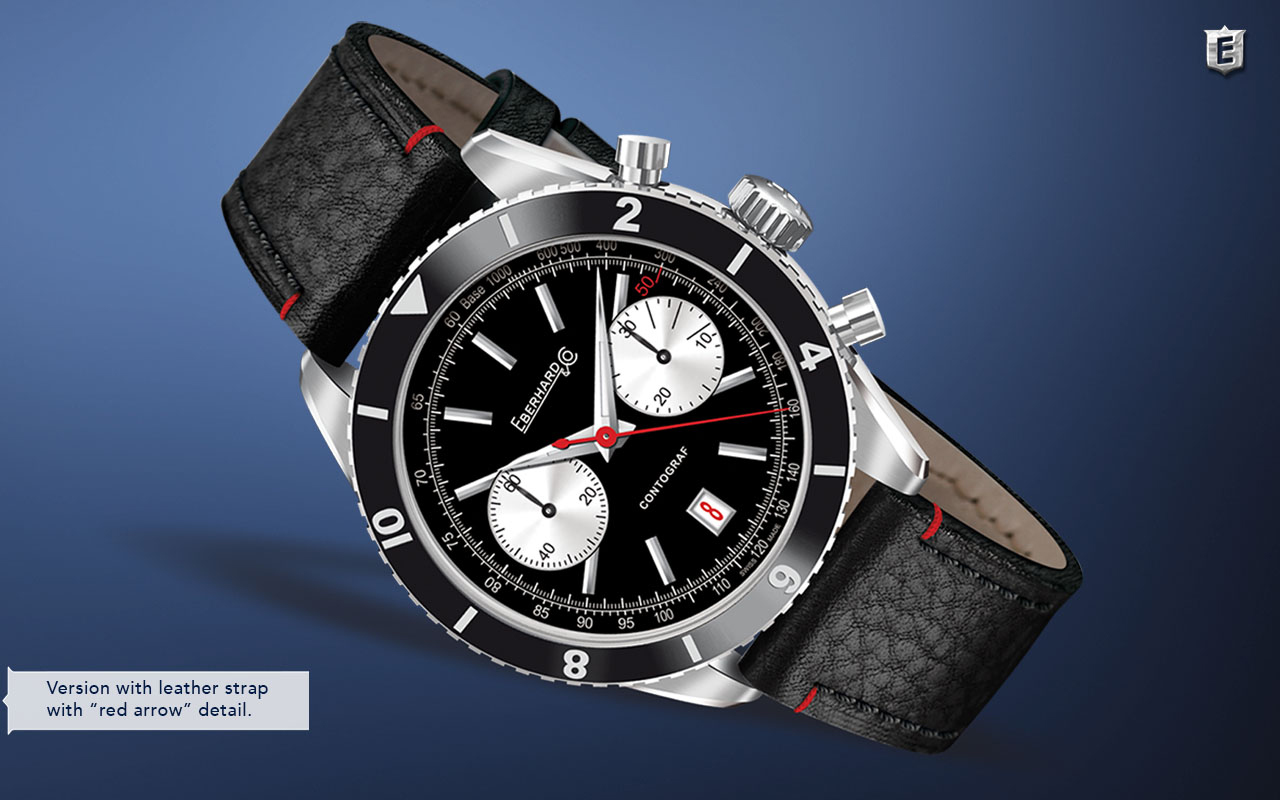

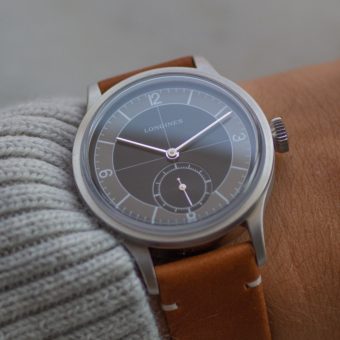

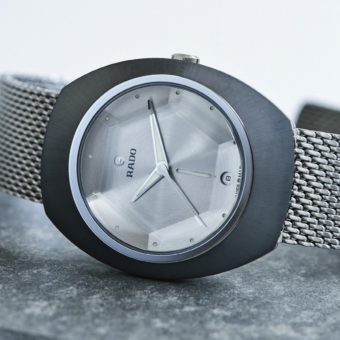
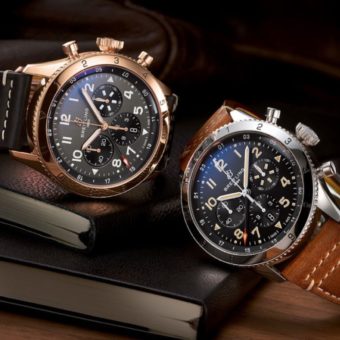
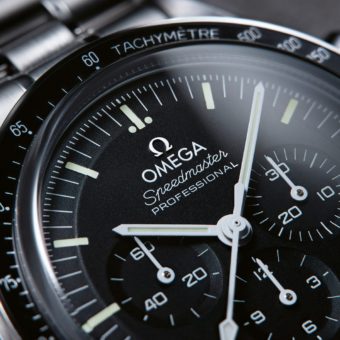
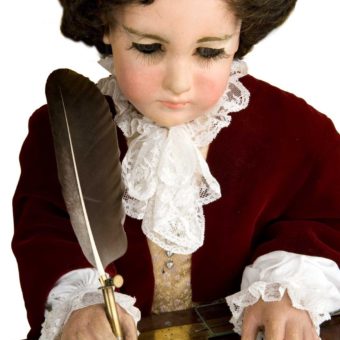
I purchased a watch from you back on the 18th December 1967 for which I still have the origing purchase document. It is an OMEGA SEAMASTER COSMIC which requires a special tool (107) to get to the workings as it is crafted from one piece of metal .
Are you familiar with this watch, what would the $ value AUS / US be today.
I believe I shoulld get it serviced are you able to do the for nad what would if likely cost.
Thank you,
Dear Mr. Heyns, please check your inbox.